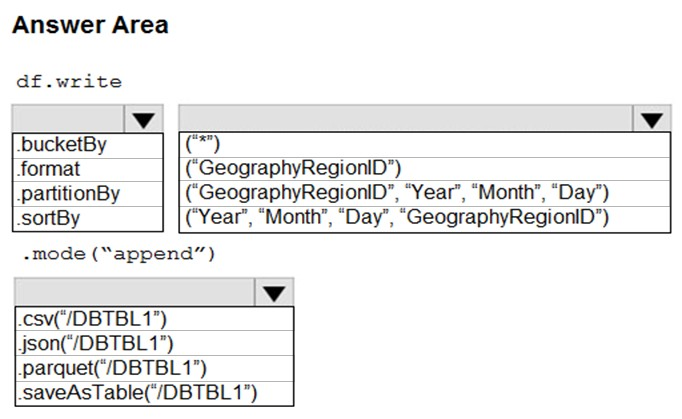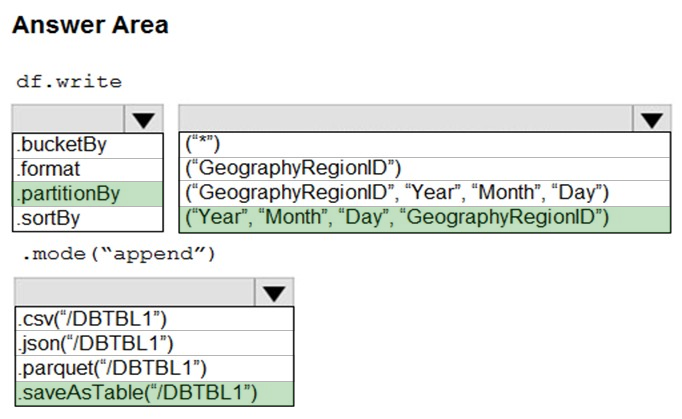HOTSPOT -
You develop a dataset named DBTBL1 by using Azure Databricks.
DBTBL1 contains the following columns:
✑ SensorTypeID
✑ GeographyRegionID
✑ Year
✑ Month
✑ Day
✑ Hour
✑ Minute
✑ Temperature
✑ WindSpeed
✑ Other
You need to store the data to support daily incremental load pipelines that vary for each GeographyRegionID. The solution must minimize storage costs.
How should you complete the code? To answer, select the appropriate options in the answer area.
NOTE: Each correct selection is worth one point.
Hot Area:

